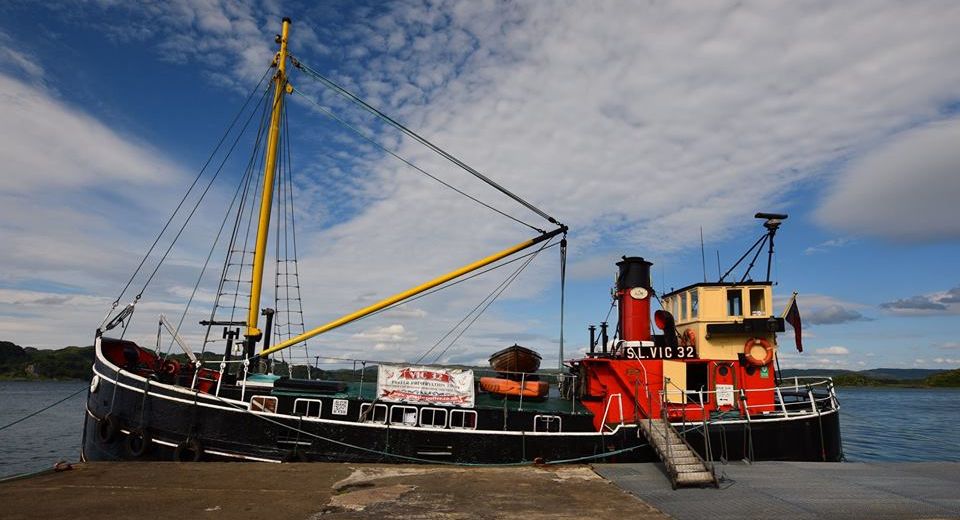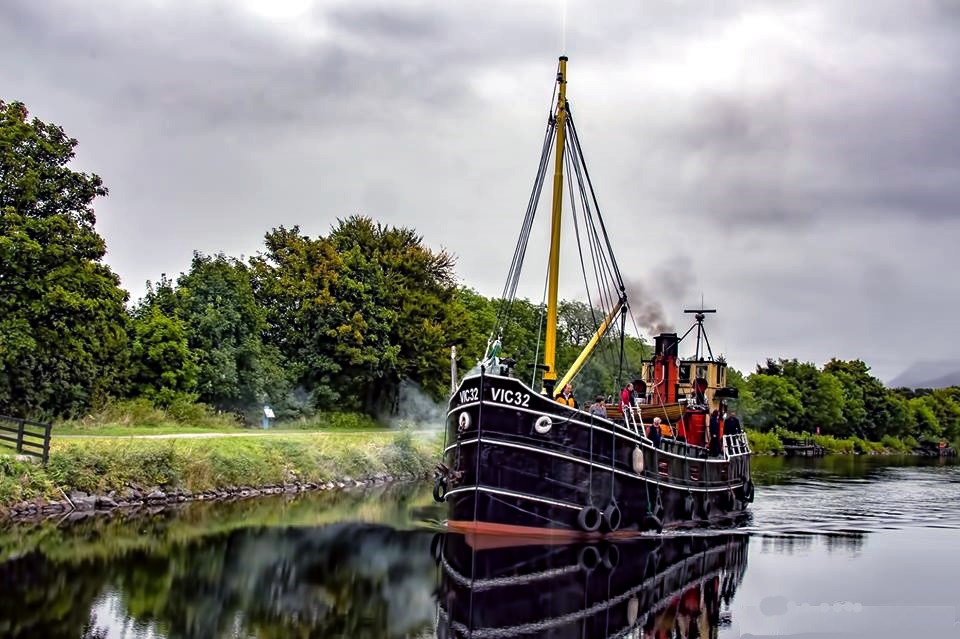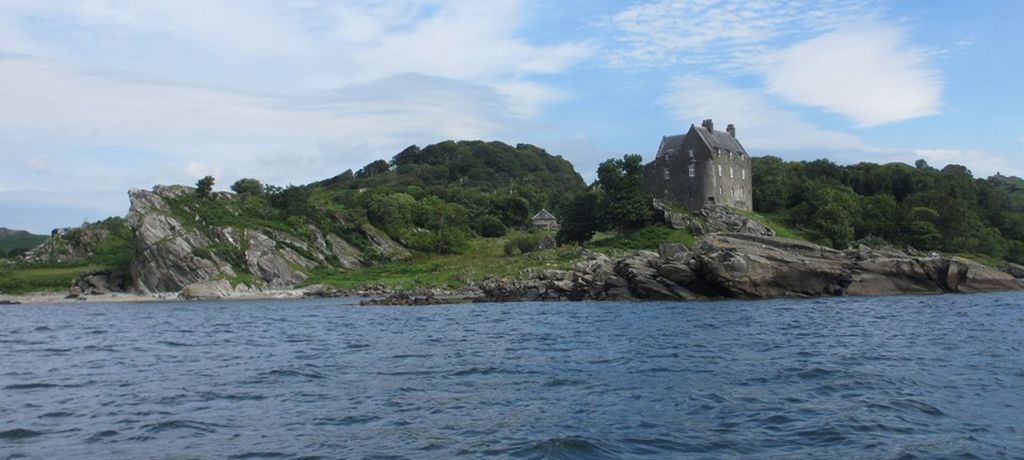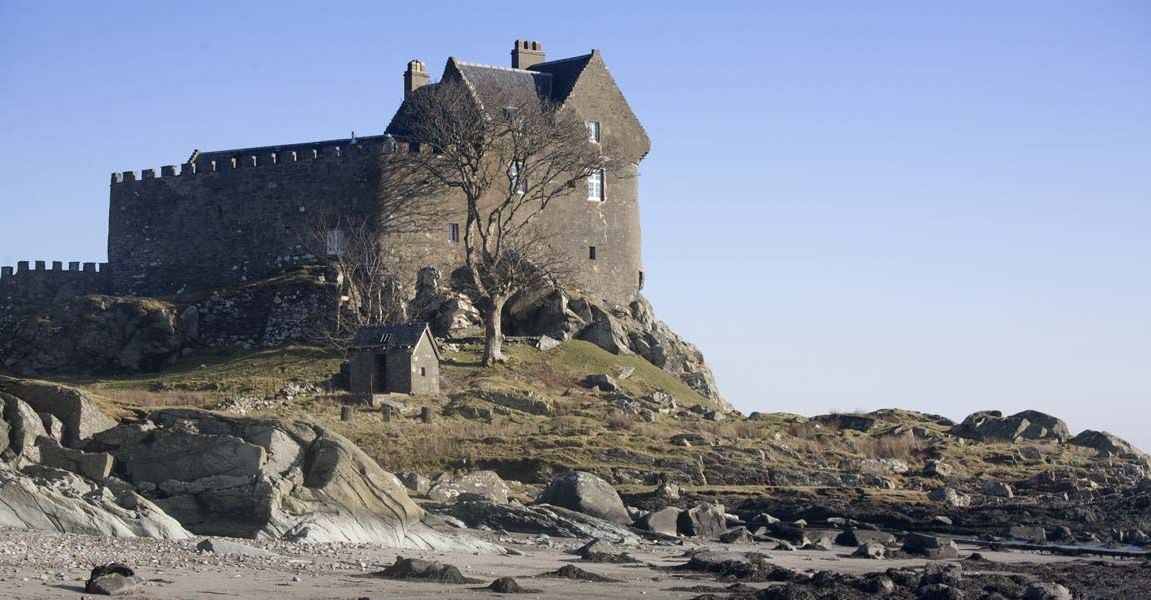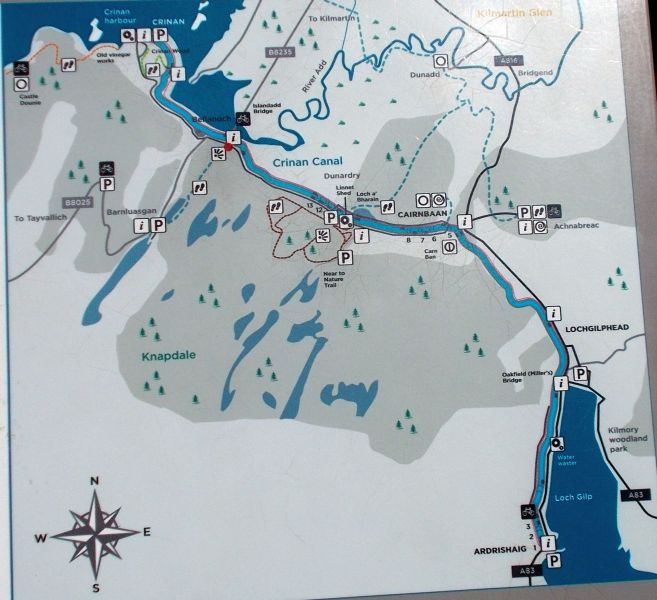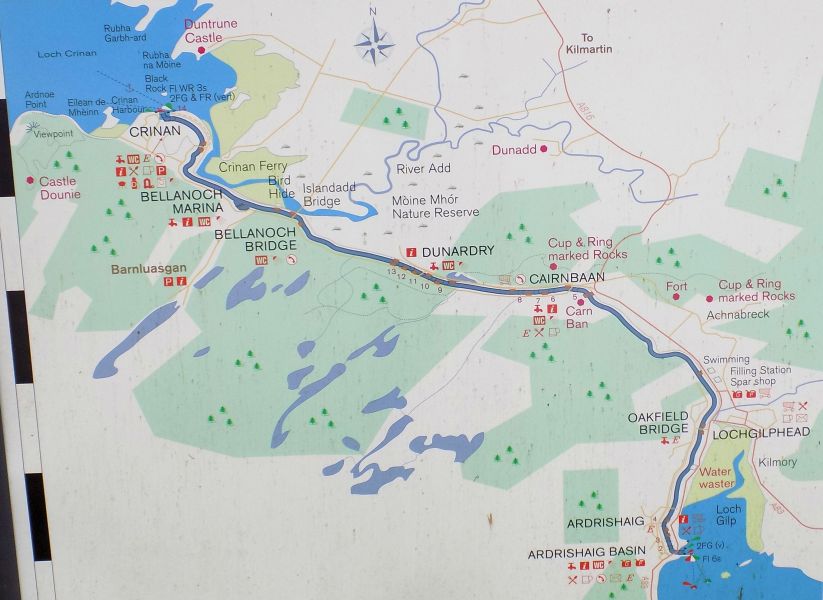
Map of
Crinan Canal
( Note:
Click here
or on above for large format copy )
|
|
Puffers - The "Vital Spark":
In her heyday, VIC27 - aka Auld Reekie - was one of countless west coast workhorses that carried vital cargoes between the mainland and islands,
providing inspiration for witty tales of life on board for Para Handy and Sunny Jim that flowed from the pen of writer Neil Munro.
Out of hundreds of puffers that served the Hebridean islands and played a crucial part in the war effort, eventually just a few would remain.
At least for VIC27, there would be the glamour of television fame, appearing in the role of Vital Spark alongside Rikki Fulton and Gregor Fisher before her star
began to fade.
For years after, she languished on the Crinan Canal, her hull rotting and engines seized.
That may well have been where her story ended but for an epic effort led by volunteers and a local boatyard to breathe
new life into her engines and send her - shining like a new pin - to puff her way across west coast waters once again.
Seventeen years of work to restore VIC27 reached its conclusion, when her gleaming new boiler was loaded with coal and her engines fired.
With her lum reeking black smoke, a blast of her horn and remarkable grace for a vessel built to haul everything from
whisky to sheep, coal to grain and even the occasional piano, Auld Reekie slipped elegantly into Loch Crinan, making barely
a splash in the glass smooth water.
Below her deck were shiny brass gauges and wooden handles worn down by the sweat of long gone crew, pipes painted
emerald green, blood red and inky black, and the searing heat of the red hot boiler.
On the shore, ]ohn Dunlop, a director of Crinan Boatyard that had overseen the long and often uncertain restoration of one
of Scotland’s last three puffers, watched her go and breathed a sigh of relief.
“It felt wonderful,” he says of the moment Auld Reekie blasted her horn and tasted water for the first time in more than
a decade. “I stood on the shore, watching in case of any incidents. Thankfully, there were none.”
Sixty-six feet long and able to carry up to 100 tons of cargo, anyone of a certain age watching might have been transported
back in time - if not to when Clyde puffers kept the islands stocked up, then perhaps to 1988 when VIC27 was an attraction at
the Glasgow Garden Festival on the Clyde.
Or maybe thoughts would turn to grainy black and white episodes of Para Handy and his hapless crew, whose inability to
navigate the west coast without turbulence of some kind was the Still Game of its day.
Having appeared under the pseudonym The Vital Spark, in the 1994 BBC TV series The Tales Of Para Handy, VIC27 was
berthed at Ardrishaig basin, looking ever more fragile with each passing year.
With time running out and her boiler condemned, she was gently towed through the Crinan Canal from her berth at
Ardrishaig to the boatyard at Lochgilphead in October 2008.
There, Dunlop and his fellow community of enthusiasts built a slipway just for her and took a grapple hook to its dried timber
wheelhouse, shattering it and heralding the beginning of almost two decades of work.
Once on the slipway, however, she was a daunting sight.
Pressure washing exposed gaping holes in a hull that had been heavily corroded by ash and sea water, enough to have made
some simply down tools and give up.
It was, admits Mr Dunlop, a wonder that she made it through the canal at all. “The holes that appeared through the hull gave
us a fright - if you’d known the condition of her in the water, you’d never attempt to move her.
“But we knew it was very big job to scrap her as well, so we got on with it.
“Like Magnus Magnusson used to say,” he added, “we started so we had to finish.
And we were determined to see it through.”
Over the following months and years, apprentices, tradesmen and willing volunteers - among them one enthusiastic
group of friends from Islay - stripped out the engine room, replaced up to 30% of the steel hull plating, sandblasted and
repainted it, refurbished the coal bunkers, and reassembled the 70 year old engine, described as a “tribute” to Great Yarmouth
manufacturer Crabtree 1931 Ltd.
The condemned boiler was removed and sent to its original maker, Cochran UK, which has been making boilers in Annan
since 1878. Once there, it became the template for a new one.
A new larch and cherry wooden wheelhouse was fitted to house the steering wheel, and the all-important voice pipe to
enable communication put in place along with the binnacle.
Guided by a naval architect and aided by computer programs and guidebooks from Lloyd’s, the restoration was not
confined to rotting structure or the important inner workings: the captain’s cabin, for example, now looks as it would
have done when she was built by Isaac Pimblott & Sons, Northwich, on the River Weaver in Cheshire in 1943.
With many vessels required for war service, and oil and diesel supplies required to fuel them, a need arose for tough
coal-fired steam puffers that could transport goods around the county’s coast and support the war effort.
During the Second World War, that single Cheshire yard built 21 VICs, short for victualling inshore craft,
for the Ministry of War. In a year alone it turned out one boat every six weeks, some destined to work servicing war ships as far
flung as Scapa Flow, and others to keep trade moving around the coast.
VIC27 worked at first in the Liverpool area, then turned north to Greenock.
As demand for her services faded on the west coast, she was bought by an Edinburgh-based enthusiast in the 1960s,
renamed Auld Reekie, and reconfigured to carry passengers and to operate as a youth training vessel.
The Glasgow Garden Festival and The Tales Of Para Handy put her in the spotlight briefly, but she was tottering on
the brink of being lost for good when the Crinan crew stepped in.
Back at Crinan Boatyard, one of Auld Reekie’s restorers’ final tasks was to fit a second-hand bronze propeller to the
original shaft, and a stern-hung rudder to guide her on her way.
As the recent sea trials showed, all was shipshape: loaded with more than 20 tonnes of coal on board and no ballast, she
hit a tidy seven knots. It was a true labour of love, but why bother? “We couldn’t bear to see her declining,” Mr Dunlop said.
“When you have got the engine turning and the boiler fired, the whole thing is nice and warm in the engine room and you can
imagine what it was like in the good old days, sailing along without a care in the world. These little puffers were very welcome
when they were spotted coming across the water, especially to small islands like Islay.
“It’s important to remember what it was like in the past.
“Besides, over the 17 years we didn’t think much about how long it was taking.”
As well as being steeped in nostalgia, the restoration of VIC27 was a chance for apprentices and enthusiasts to get their
hands dirty working on just one of three puffers left in Scotland.
Another restored Clyde puffer, VIC32, has been based in the Crinan Canal since 1979 from where it operates tours along the
coastline for the Puffer Preservation Trust Scotland’s only other, VIC72 - renamed Vital Spark in honour of the fictional puffer
- sits at Inveraray Pier, close to the birthplace of the Para Handy creator Neil Munro.
Owned by Ricky Christie, of the North of Scotland Distillery Company, it is being restored with a view to possibly becoming
a floating distillery.
Meanwhile, at Crinan Boatyard, VIC27 has attracted interest from Para Handy fans and puffer enthusiasts from around the world.
Donations to support the restoration flowed in - Mr Dunlop has totted up what it cost to restore her but right now is
keeping it to himself — while debate has raged since the first day of restoration began over what her future might be.
That continues, he added. It might be tourism, perhaps another stint in front of the cameras or, he jokes, she might be able
to step in when the CalMac ferries grind to a halt.
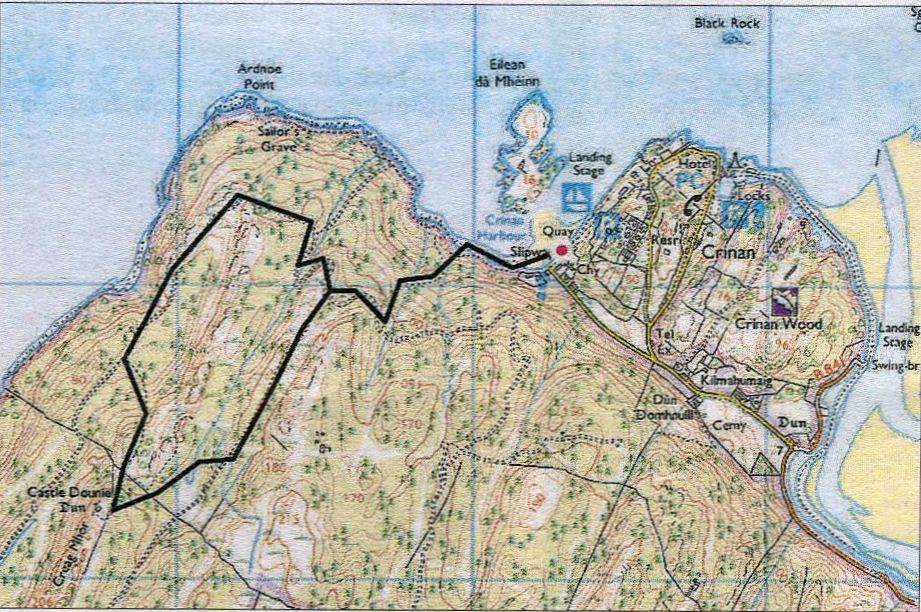
Route
Map of Dounie Castle Walk
|
|




